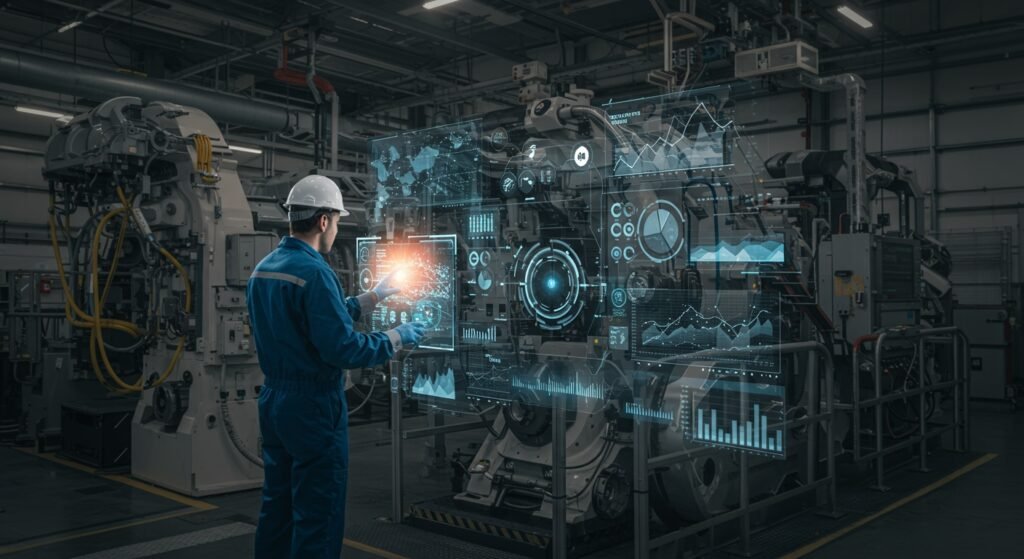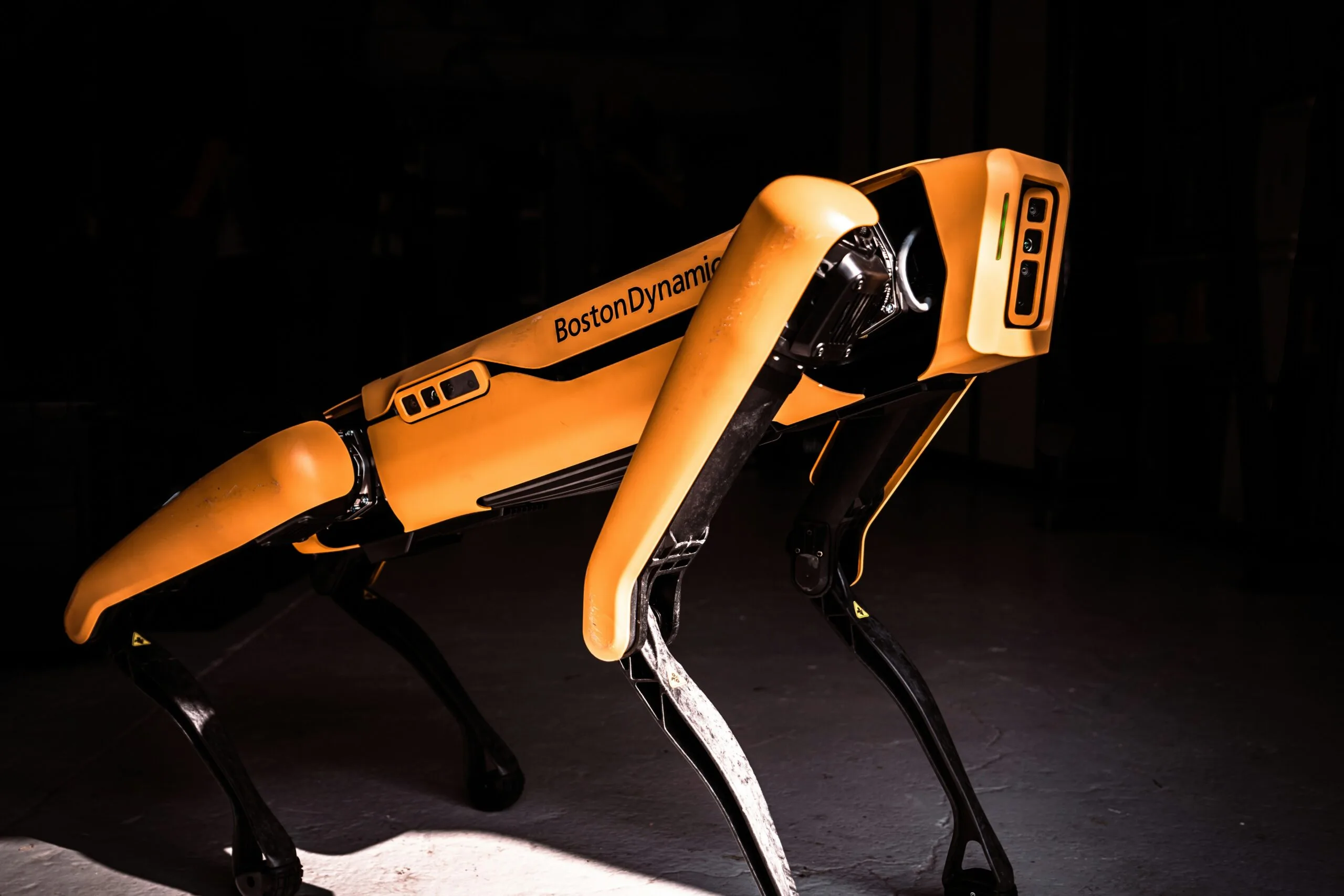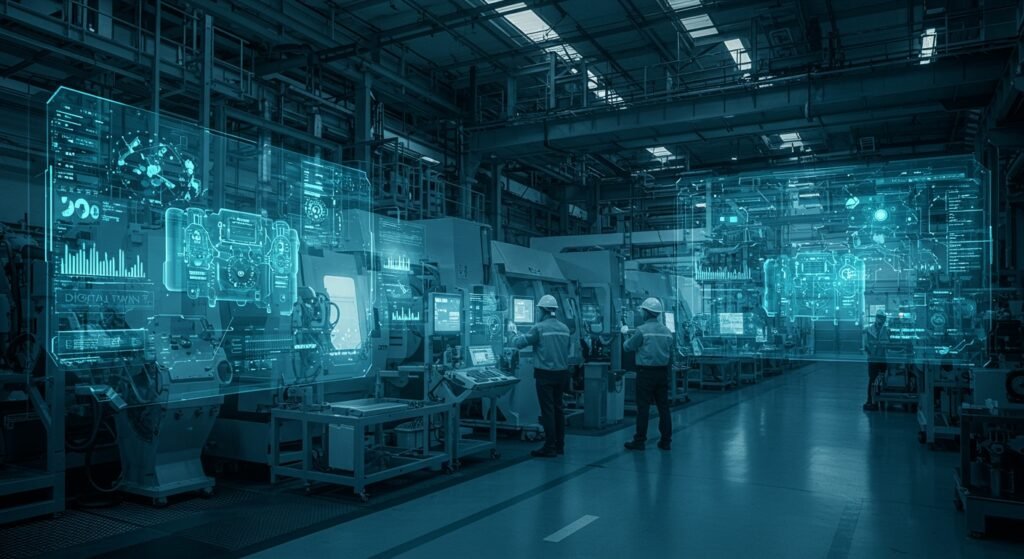From Reactive to Predictive: The Evolution of Industrial Maintenance
The gears of industry never stop turning, but how we keep them turning has undergone a monumental transformation. For decades, maintenance strategies were largely a game of catch-up or routine checks. Today, however, a new paradigm is dominating the industrial landscape: predictive maintenance. This shift from reactive fixes to proactive anticipation is not just an upgrade; it’s a fundamental reimagining of efficiency, cost-effectiveness, and operational longevity.
Table of Contents
- The Old Ways: Reactive vs. Preventive Maintenance
- What is Predictive Maintenance?
- The Pillars of Predictive Maintenance: Technology
- Unlocking Value: Key Benefits of Predictive Maintenance
- Navigating the Transition: Implementation Strategies
- The Future Landscape of Industrial Maintenance
The Old Ways: Reactive vs. Preventive Maintenance
Before diving into the prowess of predictive maintenance, it’s crucial to understand the historical context. Industrial operations traditionally relied on two primary maintenance philosophies, each with inherent limitations.
Reactive Maintenance: A Costly Gamble
Reactive maintenance, often called ‘run-to-failure,’ is exactly what it sounds like: waiting for equipment to break down before repairing it. This approach leads to unpredictable and often extended downtime, emergency repairs, higher costs for expedited parts, and potential safety hazards. While seemingly simple, its hidden costs in terms of lost production and collateral damage are immense.
Preventive Maintenance: A Step Forward, But Not Enough
A significant improvement, preventive maintenance involves scheduled inspections and repairs at fixed intervals, regardless of the equipment’s actual condition. While it reduces the sudden failures characteristic of reactive maintenance, it can lead to unnecessary maintenance (replacing parts too early) or, conversely, missing imminent failures if they occur between scheduled checks. It’s a ‘one-size-fits-all’ approach that doesn’t account for the unique operational stress and wear of individual assets.
What is Predictive Maintenance?
This brings us to the forefront of modern industrial maintenance: predictive maintenance (PdM). Unlike its predecessors, PdM uses advanced technologies to monitor the condition of equipment in real-time, predict potential failures, and schedule maintenance only when it’s genuinely needed. It’s about ‘knowing’ rather than ‘reacting’ or ‘guessing.’ By leveraging continuous monitoring and data-driven insights, businesses can optimize asset performance, minimize unexpected downtime, and significantly reduce operational costs.
The Pillars of Predictive Maintenance: Technology
The capabilities of predictive maintenance are built upon a foundation of interconnected technologies that collect, analyze, and act upon data.
IoT Sensors and Edge Computing
At the ground level, a network of Internet of Things (IoT) sensors gathers crucial data points such as vibration, temperature, pressure, acoustics, and power consumption from industrial machinery. Edge computing allows for preliminary data processing closer to the source, reducing latency and bandwidth requirements for real-time analysis.
AI, Machine Learning, and Data Analytics
The raw data collected by sensors is fed into sophisticated AI and machine learning algorithms. These algorithms identify patterns, anomalies, and deviations that indicate potential equipment degradation or impending failure. Advanced data analytics tools then provide actionable insights, forecasting when maintenance will likely be required.
Cloud Platforms and Connectivity
Cloud-based platforms facilitate the storage, processing, and analysis of vast amounts of data from multiple assets across different locations. Secure connectivity ensures seamless data flow and allows maintenance teams to access critical information from anywhere, enabling remote monitoring and management.
Unlocking Value: Key Benefits of Predictive Maintenance
The adoption of predictive maintenance offers a cascade of benefits that dramatically improve industrial operations and overall business performance:
- Reduced Downtime: By predicting failures, maintenance can be scheduled during planned downtime or before a critical failure occurs, drastically minimizing unexpected stoppages. This is a core aspect of effective downtime reduction.
- Lower Maintenance Costs: Fewer emergency repairs, optimized part replacements, and minimized collateral damage contribute to significant cost savings.
- Extended Asset Lifespan: Addressing issues proactively prevents minor problems from escalating, extending the operational life of valuable equipment.
- Optimized Spare Parts Inventory: Accurate predictions allow for just-in-time ordering of parts, reducing inventory holding costs.
- Improved Safety: Proactive maintenance reduces the likelihood of catastrophic failures, creating a safer working environment for employees.
- Enhanced Production Quality: Well-maintained equipment operates more consistently, leading to higher product quality and reduced waste.
- Greater Operational Efficiency: The entire production process becomes more reliable and predictable, leading to improved planning and resource allocation.
Comparison of Maintenance Approaches
| Feature | Reactive Maintenance | Preventive Maintenance | Predictive Maintenance |
|---|---|---|---|
| Cost | High (unplanned) | Moderate (scheduled) | Low (optimized) |
| Downtime | Unpredictable, high | Scheduled, some unnecessary | Minimal, planned |
| Planning | None | Fixed schedule | Condition-based, optimized |
| Asset Lifespan | Shortened | Average | Extended |
| Data Reliance | Low | Low-Moderate | High (IoT, AI) |
| Efficiency | Low | Moderate | High |
Navigating the Transition: Implementation Strategies
Transitioning to predictive maintenance requires strategic planning and investment. Here are key steps:
- Start Small: Begin with a pilot project on critical, high-value assets to demonstrate success and build internal confidence.
- Invest in Technology: Acquire the necessary sensors, software, and data analytics platforms.
- Data Collection and Integration: Establish robust processes for data collection, storage, and integration with existing systems.
- Skill Development: Train existing staff or hire new talent with expertise in data science, IoT, and industrial automation. Learn more about Industrial Automation Benefits to understand the broader impact.
- Foster a Data-Driven Culture: Encourage decision-making based on insights derived from maintenance data.
The Future Landscape of Industrial Maintenance
The journey from reactive to predictive is far from over. The future of industrial maintenance promises even greater sophistication, with advanced AI capabilities, digital twins, and fully autonomous maintenance systems becoming more prevalent. This ongoing evolution will continue to refine maintenance management, pushing the boundaries of efficiency, safety, and productivity.
For further reading on industrial maintenance trends, visit Manufacturing.net.
Embracing predictive maintenance isn’t just about fixing machines; it’s about transforming entire operations into intelligent, resilient, and highly competitive entities ready for the challenges of Industry 4.0 and beyond. The power of foresight is truly redefining the industrial future.


